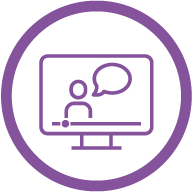New report shows more to do to reduce disabled people’s inactivity

Four in five disabled people want to be more active but demand is not being met. Only two in five feel they are given the opportunity to be as active as they would like to be. Worryingly, this level of inequality is resulting in a more negative experience, including social isolation for many disabled people.
The findings come from a ground-breaking report released by Activity Alliance today, involving more than 2000 respondents.
Activity Alliance’s Annual Disability and Activity Survey is supported by Sport England. It gives an in-depth comparison of disabled and non-disabled adults’ experiences of sport and activity.
Key findings include:
- Four in five (81%) disabled adults want to do more activity than they currently do compared with fewer than three in five (57%) non-disabled people.
- Just four in 10 (40%) disabled people feel they are given the opportunity to be as active as they would like to be compared with seven in 10 (71%) non-disabled people.
- Disabled people are half as likely as non-disabled people to agree that ‘sport’ is for someone like them (32% vs 63%).
- Seven in ten disabled people are motivated to be active to improve or maintain their physical health.
- Two in five (41%) disabled people said a fear of losing benefits prevents them from trying to be more active.
- Two in three (67%) disabled people said they would listen to GPs, doctors and nurses about taking part in activity.
Statistics continue to show disabled people are twice as likely to be inactive as non-disabled people[1].
This new report helps readers to understand the motivations, barriers and scope for improvement in more detail.
The report concludes with three recommendations for sport, health and other sectors to work towards:
1. To address the wider determinants of inactivity
2. Design and lead a choice of accessible activities
3. Challenge perceptions through inclusive and accessible communications
Barry Horne, Chief Executive for Activity Alliance, says:
For the first time, we are able to compare perceptions and experiences of disabled people to non-disabled people. It is a new step in gathering a snapshot of real life for a huge number of people in our population. We want to achieve fairness for disabled people in sport and activity, a position where disabled people are as active as non-disabled people. The findings provide robust insight to Activity Alliance and our partners. This report will be key to helping us and others to change the reality of disability, inclusion and sport.”
Activity Alliance’s Annual Disability and Activity Survey complements Sport England’s Active Lives Adult Survey.
With the focus on disabled people, this report goes into greater detail on perceptions, experiences and important issues.
Future years will enable Activity Alliance and partners to compare and contrast gaps and trends in the market.
Tim Hollingsworth, Chief Executive, Sport England, says:
At Sport England we are all too aware that there’s an unacceptably high gap in activity levels between disabled and non-disabled people, and that despite a desire to be more active, many disabled people are missing out on the range of benefits that can be gained through physical activity. Activity Alliance’s first Annual Survey increases our insight into this issue and throws down a challenge to all in the physical activity sector: to use this new understanding to make sure that far more disabled people can get active in a way that is right for them. It’s a challenge that personally I know we must take up.”
The findings cover seven topics:
1. Wellbeing Throughout all measures, disabled people consistently reported poorer wellbeing than non-disabled people. Disabled people are a large proportion of our society – one in five people. Yet, more than two in five (43%) rated their health as poor or very poor. Disabled people were also twice as likely as non-disabled people to say they feel lonely.
2. Perceptions of sport and active recreation Disabled people had a less positive perception of, and relationship to, sport and active recreation, compared to non-disabled people. The word ‘sport’ has a considerable negative impact with disabled people being half as likely to agree that sport was for someone like them. (32% vs 63%). Due to sport being perceived as social, fast-paced and competitive. Physical activity, meanwhile, was associated with health and leisure.
3. Barriers and motivators for activity Disabled people were motivated to be active by physical and mental wellbeing, but still feel their impairment is a significant barrier. Most disabled people (84%) reported that a long-term health condition, impairment or illness stops them doing as much sport or physical activity as they would like. More than half of disabled people mentioned their impairment as the sole barrier to being more active.
4. Benefits and financial assistance Previous research from ‘The Activity Trap: Disabled people’s fear of being active’, has shown that benefits and financial assistance may play a crucial role in disabled people’s activity levels. Survey results show that seven in ten disabled people respondents who received benefits said they rely on this financial assistance to be active. More than two in five (41%) disabled people said a fear of their benefits or financial assistance being taken away prevents them from trying to be more active.
5. Types of activity The report shows that half of disabled people (50%) said they currently take part on their own. They were relatively evenly split between wanting to be active with a mix of disabled and non-disabled people (25%), alone (29%) or having no preference (29%). The report also showed that 7% would prefer to be active with other disabled people with similar impairments to themselves.
6. Organised activity sessions and leaders Just one in four (24%) disabled people had taken part in an organised activity session in the last year (vs 42% of non-disabled people). Disabled people generally found being included in activity sessions more important than non-disabled people.
7. Information and advertising The way information about opportunities to take part in sport and physical activity is communicated is crucial. The report reinforces the influence health and sport professionals have in enabling more disabled people to become active. Two in three (67%) said they would listen to GPs, doctors or nurses about taking part in sport and physical activity. Almost half (45%) of disabled people chose websites as an important information source. Around a third (35%) of disabled people chose medical practices and professionals, compared to just 13% of non-disabled people.
Download the reports and detailed recommendations via www.activityalliance.org.uk/annual-survey
-Ends –
Latest news from Active Black Country
View all news
INSIGHT HUB
Timely data and learnings in relation to physical activity and sport in the Black Country and the added value we can offer.
Our Black Country Water Safety Programme has had a big impact since launching. Access our free resources for schools to increase the number of children who are water safe and boost their enjoyment of swimming.

ACTIVATION ACADEMY
Resources and training material to support the Black Country sport & physical activity workforce.













